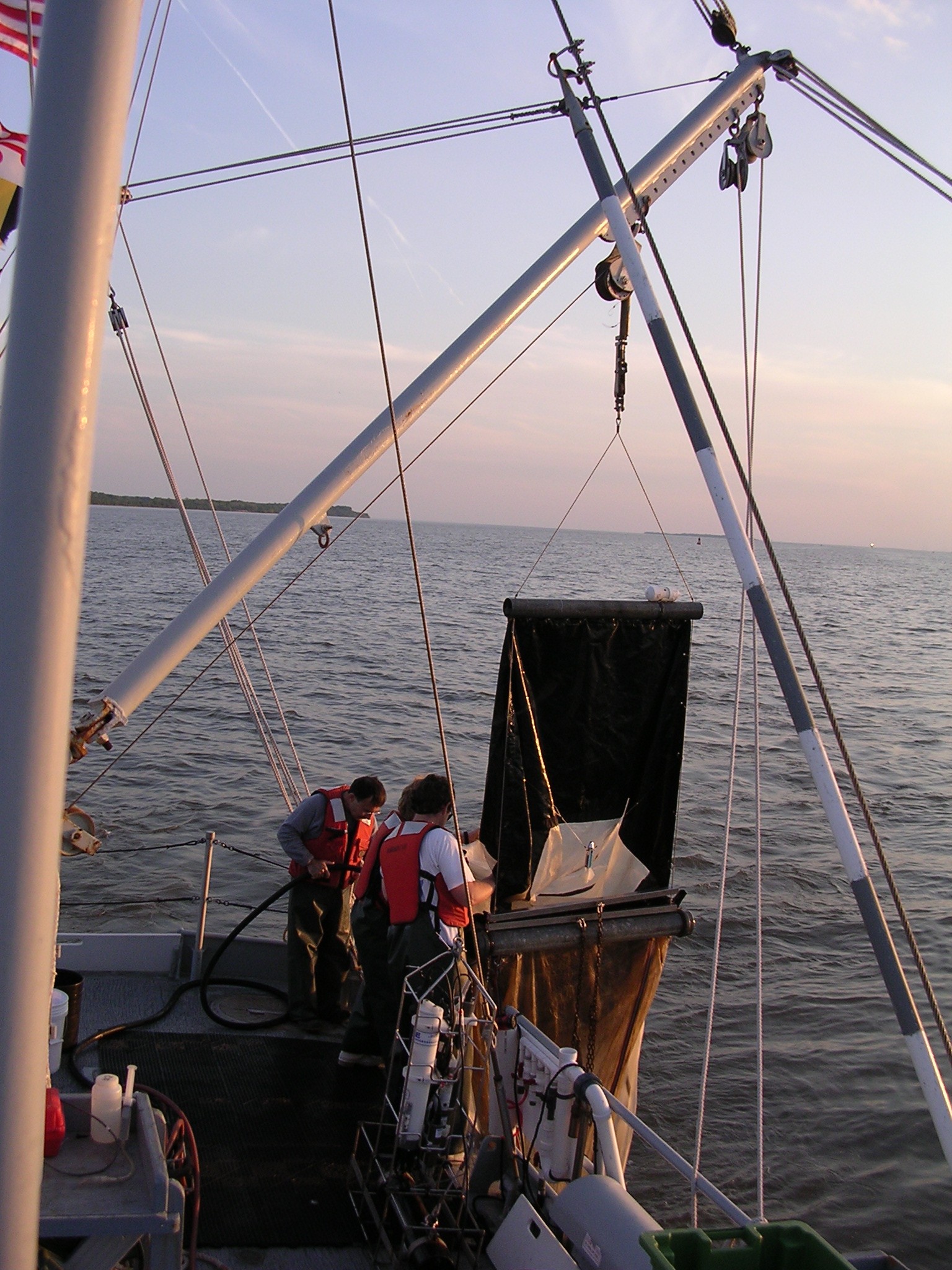BITMAX I and BITMAX II: Bio-Physical Interactions in the Maximum Turbidity Zone
Reproductive success (referred to as recruitment) of anadramous fishes is tightly coupled to the physics and biology of the highly turbid, salt-fresh transition zone in the upper regions of estuaries. The Estuarine Turbidity Maximum (ETM) is a physical feature located at the heads of coastal plain esturaries. ETMs trap and retain sediment, detritus, zooplankton and early-life stages of fish. Our BITMAX projects, funded by the National Science Foundation, are multidiciplinary programs advancing fundamental knowledge of ETM structure and dynamics. The ETM enhances trophic transfer from microbes to plankton to fish. The multidisciplinary research addressed two hypotheses of direct importance to recruitment of anadromous striped bass and white perch: 1) abundant food and stable stratification in the ETM enhance feeding conditions and production of zooplankton and fish larvae, and 2) life-history strategies of fishes are adapted to respond to pulses in ETM circulation patterns. The research was conducted through coordinated field, laboratory, and numerical modeling experiments in the ETM region of Chesapeake Bay.
In this research, the nutritional wellbeing of larval-stage striped bass was found to be strongly related to the timing and amounts of freshwater flow entering the upper Chesapeake Bay and to the associated production of suitable zooplankton prey, especially the copepod Eurytemora affinis, near the salt front and ETM. Coarse control over recruitment strength of striped bass was exercised in the larval stage and related to nutritional sources and amounts, and to the physics of the salt-front, ETM region. Strong density dependence in growth and mortality was observed in the small juveniles of striped bass in which the more than 30-fold variability in abundance of age-0 juveniles was regulated to result in only 3-5-fold variability at age 3 when striped bass are recruited to the fishery.

Locations of sampling stations, 2007 and 2008, in the channel of upper Chesapeake Bay, USA. Locations of the salt front and ETM usually fall within the bounds of the Blue oval.
Representative Publications
- North, E. W., and E. D. Houde. 2001. Retention of white perch and striped bass larvae: biological-physical interactions in Chesapeake Bay estuarine turbidity maximum. Estuaries 24(5): 756-769.
- North, E. W., and E. D. Houde. Linking ETM physics, zooplankton prey, and fish early-life histories to white perch (Morone americana) and striped bass (M. saxatilis) recruitment success. Marine Ecology Progress Series.
- North, E. W. and E. D. Houde. 2006. Retention mechanisms of white perch (Morone americana)and striped bass (Morone saxatilis) early-life stages in anestuarine turbidity maximum: an integrative fixed-locatio and mapping approach. Fisheries Oceanography 15:429-450.
- Martino, E. J. and E. D. Houde. 2010. Recruitment of striped bass in Chesapeake Bay: spatial and temporal environmental variability and availability of zooplankton prey. Marine Ecology Progress Series 409:213-228.
- Martino, E. J. and E. D. Houde. 2012. Density-dependent regulation of year-class strength in age-0 juvenile striped bass (Morone saxatilis). Canadian Journal of Fisheries and Aquatic Sciences 69:430-446.
- Shideler, A. R. C. and E. D. Houde. In press. Spatio-temporal variability in larval-stage feeding and nutritional sources as factors influencing striped bass (Morone saxatilis) Recruitment Success. Estuaries and Coasts.



